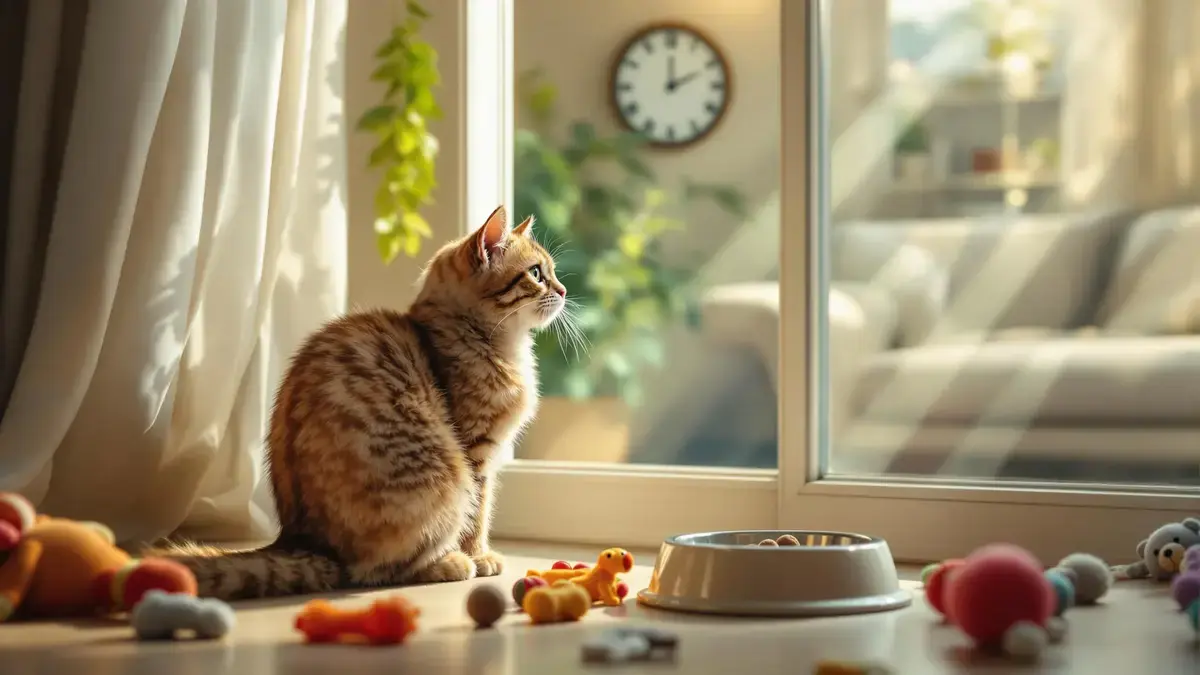Cats, often perceived as independent animals, can also feel loneliness significantly. Their ability to be alone varies depending on their personality and environment. While a cat may handle an absence of 24 to 48 hours without issue, signs of stress, such as excessive meowing and destructive behaviors, may appear beyond this timeframe. It’s essential to monitor these signs and adjust the environment to minimize anxiety.
The essential information
- Cats feel loneliness despite their independent nature.
- They can stay alone without issues for up to 48 hours, but signs of stress may emerge afterwards.
- It is crucial to monitor the signs of distress such as meowing or destructive behavior.
- Solutions exist to reduce anxiety: interactive toys, environmental stimulation, and external help.
The perception of cats as independent animals
Cats are often regarded as independent pets, capable of fending for themselves during extended periods. However, this perception can be misleading, as it is important to understand that these animals also experience loneliness, even if they do not express it in the same way as other domestic animals. Their behavior indicates that they can experience a certain degree of anxiety when left alone, raising the question: how long can a cat truly stay alone without suffering?
The tolerance to solitude in cats
The tolerance for solitude varies from cat to cat, depending on factors such as individual personality and the environment in which they live. Some cats can be quite resilient, capable of being left alone for up to 24 or even 48 hours without major issues. However, beyond this period, signs of stress may begin to appear, indicating that solitude is starting to have a detrimental effect on their well-being.
The Secret of English Gardeners for Eliminating Snails Without Chemicals
Signs of distress in cats
Signs of distress due to prolonged solitude can include excessive meowing, changes in appetite, destructive behavior, inappropriate urination, or even compulsive grooming. These indicators are signals that owners must learn to recognize to prevent potential physical and mental health problems in their pets. Therefore, it is crucial to monitor these behaviors and take prompt action if signs of stress begin to manifest.
How to reduce your cat’s anxiety
To help reduce anxiety caused by loneliness, several solutions can be implemented. Utilizing interactive toys and stimulating the environment can greatly enrich your cat’s life, distract them, and make them happier in your absence. Additionally, automatic food and water dispensers ensure they have access to everything they need. Leaving the radio or television on can also simulate human presence and counter feelings of loneliness.
The importance of assistance for prolonged absences
During your prolonged absences, it is highly recommended to hire a cat-sitter who can come and care for your cat. This will provide them with social interaction and ensure their needs are met. Indeed, it is generally advised against leaving a cat alone for more than 48 hours without any assistance, as this could lead to a decline in their mental and physical state.
Observing your cat’s behavior
It is essential to remember that each cat has a unique tolerance to solitude. Therefore, it is vital that owners closely observe their pet’s behavior. Careful monitoring will not only enable prompt identification of stress signs but also allow for the adoption of strategies tailored to each individual to improve their quality of life. Ultimately, the key lies in listening and observing to ensure the well-being of these precious companions.
















